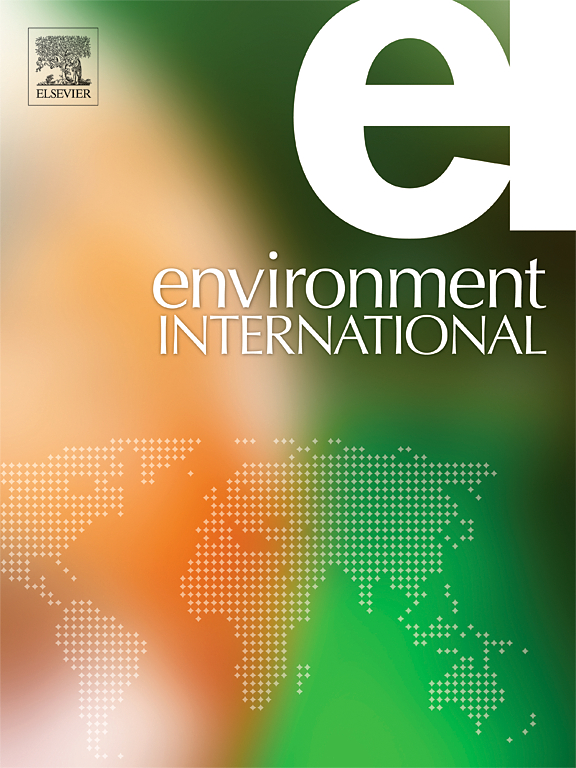印度环境空气污染和高温对每日死亡率的协同关联
IF 9.7
1区 环境科学与生态学
Q1 ENVIRONMENTAL SCIENCES
引用次数: 0
摘要
对环境空气污染和高温对死亡率的相互作用进行评估的研究很有限,特别是在印度等地区,那里的极端天气对死亡率的影响更大。本文章由计算机程序翻译,如有差异,请以英文原文为准。
Synergistic associations of ambient air pollution and heat on daily mortality in India
Background
Limited studies have evaluated the interaction between ambient air pollution and heat on mortality, especially in regions such as India, where extreme levels of both exposures occur frequently. Accordingly, we aimed to investigate the potential synergistic effects between ambient air pollution and heat on daily mortality in India.
Methods
We applied a time-series analysis for ten cities in India between 2008–2019. We assessed city-wide daily particulate matter ≤ 2.5 μm (PM2.5) and temperature levels using two nationwide spatiotemporal models. We estimated city-specific exposure-outcome associations through generalised additive Poisson regression models, and meta-analysed the associations. To evaluate the interaction between PM2.5 and air temperature (modelled at lag 0–1), a product term was incorporated between linear PM2.5 and non-linear air temperature. From this model, we estimated the effect of air pollution for increasing levels of temperature, and vice versa.
Findings
Among ∼ 3.6 million deaths, we found that the association of PM2.5 on mortality was particularly stronger beyond the 75th percentile of temperature. When we compared the associations of PM2.5-mortality at the 75th and 99th temperature percentile, we observed an increase from 0.8 % (95 % CI: −0.3 %, 1.9 %) to 4.6 % (95 % CI: 2.9 %, 6.5 %) increase in mortality per 10 μg/m3 increments, respectively. In addition, we observed a 22.0 % (95 % CI: 13.5 %, 31.2 %) increase in daily mortality risk due to an increase in temperature from the 75th to the 99th city-specific percentiles. Percent change in mortality risk increased linearly from 8.3 % (95 % CI: 2.2 %, 14.9 %) when daily PM2.5 was 20 μg/m3 to 63.9 % (95 % CI: 38.7.%, 93.7 %) at 100 μg/m3.
Interpretation
Our findings reveal a substantial synergistic interaction between ambient air pollution and temperature in India. This calls for efforts to tangibly reduce common sources of air pollution and climate change to immediately lower their combined effects on daily mortality and mitigate their long-term health consequences.
求助全文
通过发布文献求助,成功后即可免费获取论文全文。
去求助
来源期刊

Environment International
环境科学-环境科学
CiteScore
21.90
自引率
3.40%
发文量
734
审稿时长
2.8 months
期刊介绍:
Environmental Health publishes manuscripts focusing on critical aspects of environmental and occupational medicine, including studies in toxicology and epidemiology, to illuminate the human health implications of exposure to environmental hazards. The journal adopts an open-access model and practices open peer review.
It caters to scientists and practitioners across all environmental science domains, directly or indirectly impacting human health and well-being. With a commitment to enhancing the prevention of environmentally-related health risks, Environmental Health serves as a public health journal for the community and scientists engaged in matters of public health significance concerning the environment.
 求助内容:
求助内容: 应助结果提醒方式:
应助结果提醒方式:


